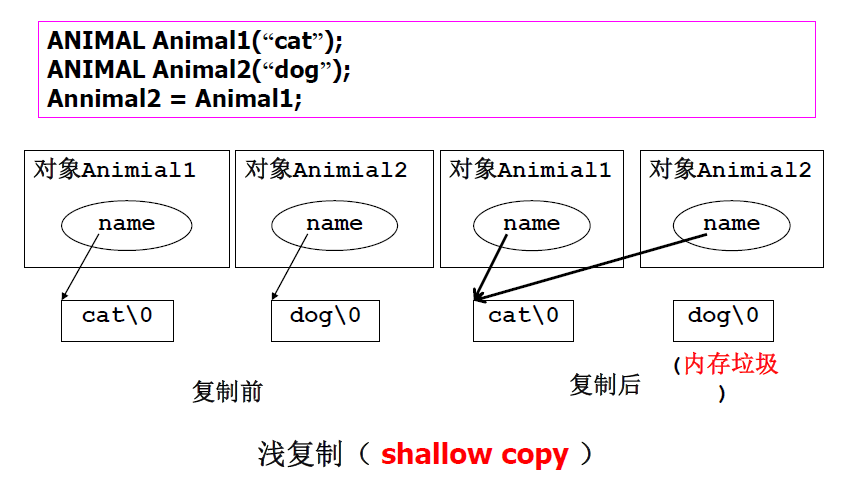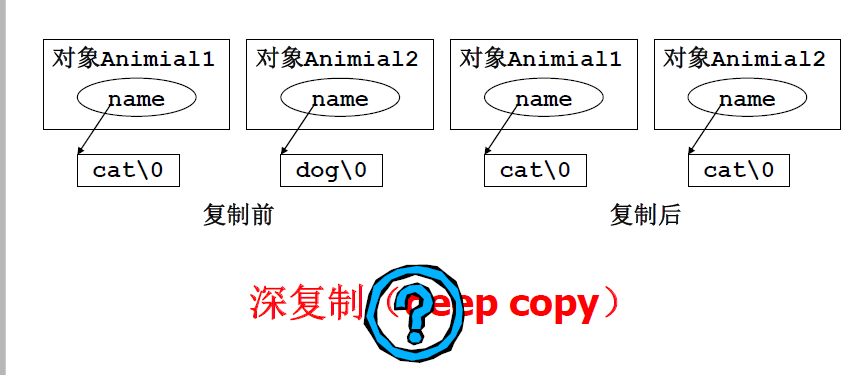longj's coding workbench
這周本人在程式設計實驗課上遇到了一道c++的連結串列構造題,對於我這種學過c初學c++不久的人來說花費的時間還蠻多的,收穫當然也不少,鑑於連結串列真是一個非常非常重要的知識點,故把程式碼與自己的思考總結記錄下來,方便以後檢視。
題目TA已經把main.cpp和list.hpp檔案寫好了,我們只需要把list.cpp這個實現檔案寫好就行。
main.cpp就不用寫了,只是TA自己的呼叫而已,關鍵是把標頭檔案和實現檔案寫好。
1、已經被TA規定好的標頭檔案:
#ifndef LIST
#define LIST
#include <string>
#include <iostream> 2、各種實現
1、一般和預設建構函式,解構函式
#include "list.hpp"
#include <sstream>
#include <iostream>
#include <string>
void swap(int*, int*);
std::string change(int i);
list::list() {
head = NULL;
_size = 0;
}
list::~list() {
clear();
}
2、等號運算子的過載
list& list::operator =(const list& l) {
clear();
if (l.head == NULL) {
head = NULL;
_size = 0;
} else {
node* ptr = l.head -> next;
_size = 1;
head = new node(l.head -> data);
for (int i = 1; i < l._size; i++) {
insert(i, ptr -> data);
ptr = ptr -> next;
}
_size = l._size;
}
return *this;
}3、拷貝建構函式
list::list(const list& another) {
this->head = NULL;
this->_size = 0;
*(this) = another;
}4、判斷是否為空
bool list::empty(void) const {
if (head != NULL) return false;
else return true;
}5、遍歷連結串列
其中change函式為一個自己定義的把int型轉為string型的函式。
返回一個特定的string來表示連結串列的內容而已,對於連結串列的構建來說不是必須存在的。
std::string list::toString(void) const {
std::string str = "";
node *ptr = head;
while (ptr != NULL) {
str += change(ptr -> data);
str += "->";
ptr = ptr -> next;
}
str += "NULL";
return str;
}6、int轉string
std::string change(int i) {
std::stringstream ss;
ss << i;
return ss.str();
}7、獲得當前連結串列長度
int list::size(void) const {
return _size;
}8、往連結串列中插入一個元素
void list::insert(int position, const int& data) {
if (position > _size) {
return;
} else {
node *current = new node(data);
if (position == 0) {
current -> next = head;
head = current;
_size++;
} else {
node *ptr = head;
while (--position) {
ptr = ptr -> next;
}
current -> next = ptr -> next;
ptr -> next = current;
_size++;
}
}
}
9、從連結串列中清除一個元素
void list::erase(int position) {
if (position < _size) {
if (position != 0) {
node *ptr = head;
while (--position) {
ptr = ptr -> next;
}
node *temp = ptr -> next;
ptr -> next = temp -> next;
delete temp;
_size--;
} else {
node *temp = head;
head = head -> next;
delete temp;
_size--;
}
} else {
return;
}
}10、給連結串列中的元素重新排個序
list& list::sort(void) {
int* a = new int[_size];
node* ptr = head;
int i = 0;
while (ptr != NULL) {
a[i++] = ptr -> data;
ptr = ptr -> next;
}
for (int p = 0; p < _size - 1; p++) {
for (int q = _size - 1; q > p; q--) {
if (a[q - 1] > a[q]) swap(&a[q - 1], &a[q]);
}
}
ptr = head;
i = 0;
while (ptr != NULL) {
ptr -> data = a[i++];
ptr = ptr -> next;
}
delete []a;
return *this;
}11、輔助交換的函式
void swap(int *a, int *b) {
int temp;
temp = *a;
*a = *b;
*b = temp;
}3、小結
1、深拷貝
淺拷貝就是對於類按照成員變數逐步複製,當類裡面的成員變數沒有指標時,淺拷貝與深拷貝的效果是一樣的,但是當成員變數裡面存在指標時,淺拷貝就會出現不足。
舉個例子:
因此,淺拷貝容易出現記憶體垃圾的現象,當程式持續執行時,將會降低計算機記憶體的利用效率。當我們沒有在實現檔案裡自定義拷貝建構函式時,編譯器會自動幫我們加上一個是淺拷貝的拷貝建構函式。所以,如果我們想要提高記憶體利用率,使用深拷貝的話,就需要自己實現,一步一步地拷貝過來,就像上面的程式碼一樣。
這裡因為過載了“=”的運算,“=”運算中實現的就是深拷貝,故此處的拷貝建構函式就直接利用“=”,以簡化程式碼的長度。
需要指出的是,在等於號過載中,需要先把原來指向的內容給清空掉,即先呼叫一次clear()函式,否則會出現記憶體洩漏的情況。
2、記憶體洩漏
程式不再需要動態建立物件時,一定要記住釋放掉這些物件。否則這些空間會一直被佔用,無法分配給別的程式使用;如果指向這些空間的指標指向了別處,將無法回收這些記憶體空間,這就是我們所說的記憶體洩漏。
- 養成良好的程式設計習慣,在對原指標賦值的時候,時刻想著會不會出現記憶體塊丟失的問題。
- 可以維護一個容器,通過過載new和delete運算子來記錄堆記憶體的申請
3.通過eden系統的提示,慢慢尋找記憶體錯誤的源頭(需要耐心和細心)(ps,Eden是我們學校的一個線上評測系統,其他的同學可能第三條不適用。。。但是可以用gdb來替代 :) )
3、
這個是什麼問題?
就是在寫拷貝建構函式的沒有一開始的兩行,即不先給head和_size以預設值,直接呼叫過載的運算子“=”
這是因為拷貝建構函式與“=”有一點點的不同,拷貝建構函式進行時,物件還沒有被創建出來,所以head為未定值,這樣進行clear()函式的話,會死在這裡面。而“=”過載時,等號左邊的物件已經被建立好了。。
4、為何過載等號時需要返回*this和引用?
改的是自己,即賦值運算子左邊的物件,如果不是返回*this和引用,將會返回一個臨時變數,雖然也可以實現,但是會加大記憶體的負荷,程式大時不推薦。
5、引用的小複習
double result;
double &re = result;
double *r = &result;則*r和re等價,改(*r)的值等於改re的值
6、連結串列
解決連結串列問題時,一定要畫圖!!!!只有畫好圖了,指標之間的相互關係才能夠比較清晰地呈現出來,這樣寫的時候正確率就高多了。
7、小結中的小結
此文作為自己的一個學習心得筆記,歡迎大家參考,主要的是連結串列的元素插入和刪除的實現,拷貝建構函式和等於號運算子的過載的實現,其他的函式只是輔助迎合原題的設計而已,可以不用太過於關注。


